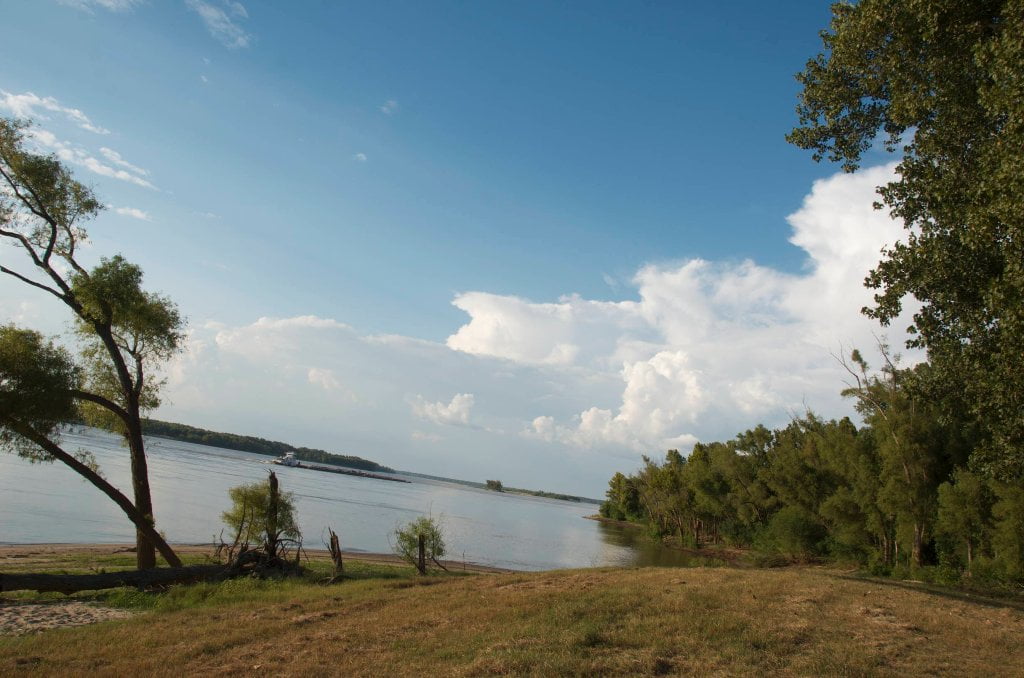The Lower Mississippi River Water Trail
“On March 7, 1866, the cutoff that had been predicted for more than half a century finally occurred. Terrapin Neck had narrowed until it was only about 30 feet wide, and the channel that the river cut across it enlarged very rapidly. On March 28 it was reported that the little steamer Ada Norvell had come down through the new cutoff instead of taking the bendway, and her captain said he believed the new channel was now safe for all boats.
“Eagle Bend soon silted up at both ends and became the oxbow lake that is called Eagle Lake. For many years, Eagle Lake was widely known among sportsmen as one of the finest fishing lakes in the South, but pollution has created many problems in recent years. The swamps and forests that made the vicinity of Eagle Bend an ideal habitat for the Bald Eagle were cleared away, and the use of agricultural chemicals on the surrounding plantations contaminated the waters of the lake. A control structure designed to prevent pollution is now under construction by the Army Corps of Engineers. Sportsmen hope that when the structure is completed, the lake will recover most of its former productivity.” (Historic Names & Places)
LBD 458 Tara Landing
Every year at the end of August thousands and sometimes tens of thousands of waders including anhingas, egrets, herons, roseate spoonbills, terns, killdeer, double breasted cormorants, sandhill cranes — and many others — roost in very particular and very remote wetlands along the Lower Mississippi River. This roosting period always occurs at the end of August. It’s predictable as the start of school. The only unknown is exactly which watering hole the waterfowl gang will gather at. This seems to change from year to year and epoch to epoch.
Some of these gathering places are located within the 9,000 acre Tara Wildlife Preserve. Ten years ago Halpino Lake was the place to be at sunset. As you’re coming down the Mississippi River you might get lucky and stumble into one of the these watering holes filled with thousands and thousands of squawking birds shaking their tail feathers and spreading their wings in and out as they make their final adjustments before settling in for the night. This is a remarkable sight. But equally remarkable and maybe even more startling is the scene gathering on the other end of the lake. Imagine an open air bus driving up, driven by a jocular Aussie named Gilbert. The people on board the chopped-off school bus all have big cameras and spotting scopes or binoculars. Gilbert and his crew swiftly offload the bus and set up a table full of bottles and start popping corks. The birders filter through in between glassfuls of wine and watching the waterfowl. Have you dropped in on some sort of American Safari? Well, yes, you have. Welcome to Tara Wildlife celebrating its annual “Stork & Cork!”
Tara Wildlife celebrates the river, its bottomland hardwood forests, and its waterfowl with an annual Mississippi River Nature Weekend (“Stork & Cork”) towards the end of



Leave A Comment
You must be logged in to post a comment.